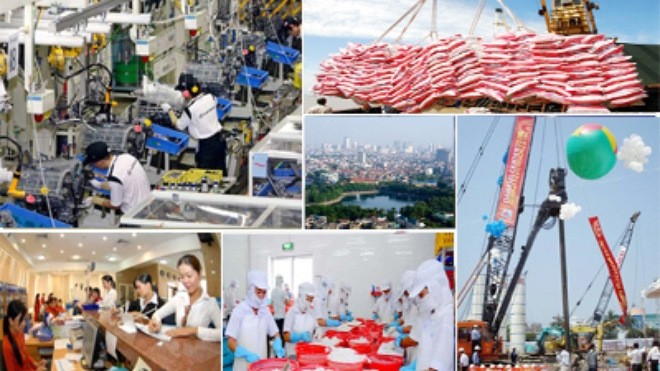This year’s growth stimulus comes not only from increased investment capital flows and a loosened debt ceiling, but also from diversification and sustainability of the improved investment environment, enhanced administrative reforms, curbed inflation and economic and diplomatic achievements. Last year’s achievements will stimulate this year’s economic growth, which is forecast to reach 6.7% in gross domestic product (GDP) and below 5% of the year’s average consumer price index (CPI).
However, the economy is facing numerous challenges and pressures as the growth has not been sustainable with reliance on capital, cheap labour sources and the foreign direct investment (FDI). The economy’s restructuring has merely achieved initial results, needing deeper accomplishments, particularly in productivity; businesses are few in number and not on a par with requirements; agricultural production has not yet been organised systematically; difficulties remain in people’s lives with a 12% poor household rate among ethnic minority groups which account for 15% of the total population, and 50% of the country’s poor households.
In addition, food and social safety and environmental pollution, which pose risks of infertility and cancer, are also pressing issues. The biggest challenge is how to take advantage of opportunities brought by the country’s participation in the ASEAN Community and free trade agreements. Businesses face increasing competition; openness in service sectors, particularly financial services; risks and higher costs of technical barriers; and stricter requirements on financial capacity and internal administration mechanisms. Arrears, bad debts and inventories of products with poor competitiveness or unfriendly-environmental technologies will be burdens to less dynamic businesses.
Tight regulations on origin and intellectual property protection are considerable challenges to Vietnamese businesses depending on foreign materials, raising costs and preventing improvements in income and production. Requirements related to environmental protection and labour will raise businesses’ production costs.
Vietnam is also under pressure of the required standards of a market economy, including monetary transfers, wage negotiation rights, protection of investors’ interests, the State’s monitoring rights over production materials and resources allocation.
The most challenged sectors are the luxury real estate business, engineering, manufacturing, medium and small-sized enterprises with backward technologies and product structures, and stagnant State-owned enterprises slowly improving their organisation, equipment, technology and administration capacity. Local animal husbandry will face fierce competition from imported products and challenges from raised input costs and elevated technical barriers if the sector does not have innovative technologies, modern production models and necessary supports in line with integration commitments.
FDI projects, especially those in the garment and textile industry, may narrow benefits local businesses can gain from FTAs, thus investment should be attracted in hi-tech projects with good financial capacity, solutions on environmental protection, large scales and ability to shift sectoral economic structures while examination and management of licensed projects should be enhanced.
The local motor industry should make major adjustments and move into segments without direct competition with vehicles imported from the US and Japan.
Challenges and prospects in socio-economic development in 2016 greatly depend on results in implementing strategic breakthroughs of a restructured economy; a shifted growth model; improved quality, effectiveness and competitiveness of products, businesses and the economy; State management’s enhanced effectiveness; promoted democracy and anti-corruption prevention; a developed support industry and localised material sources; controlled macro-financial safety, public debts, bad debts, cross ownership and credit flow; and consolidated trust in renewing and developing the country and businesses.
The above-mentioned situations have bi-directional effects on the commercial bank system as they have further opportunities to expand lending and the market segment, offer new products to the market, increase debt recoverability and decrease arrears and bad debts.
In addition, a low CPI is a favourable condition to reduce costs and competitive pressure in capital mobilisation and improve interest rates. Trade opportunities for businesses and banks will be available thanks to the strong developments of international integration commitments, laying a legal foundation, trust and new prospects in terms of market and giving a direction to significantly improve the external economic status.
Banks and credit institution will also have opportunities to diversify their investment thanks to investment socialisation and liberalisation, particularly investment in the infrastructure, equitised businesses, as well as public-private investment and build-operation-transfer projects.
The zero interest rate applied to US dollar deposits and the new flexible interest rate may both positively affect and cause administrative pressure on commercial banks. Many banks will be able to reduce costs and increase opportunities to buy US dollars from the market while having further prospects in trading on foreign monetaries based on demand, supply and a more flexible market.
This year, restricting banks and credit institutions will be continued with stricter requirements to meet international practices and standards, thus banks have to specify plans and build a long-term, professional and more effective business culture.
Both opportunities and challenges may elevate the status of the financial and banking system of Vietnam with better competitiveness and integration.
















